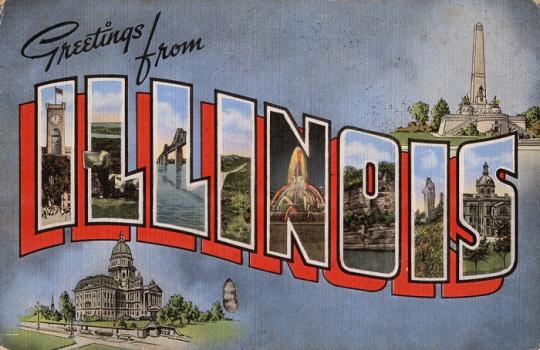
The Entertainment Software Association (ESA) and Economists Incorporated have reported that the game industry is growing four times faster than the U.S. economy and annual job growth increased more than 13 times the rate of the U.S. labor market between 2009 and 2012. And the industry is not growing in the direction most people think it is. Video games have gone far beyond being a fun teenage past time to become an eSport, an activity that more adults engage in, and even a varsity sport.
First, in 2014, Robert Morris University-Illinois (RMU) made League of Legends a varsity sport and other schools are expected to follow. For now, the RMU team will play in competitions against schools such as Harvard, Princeton and MIT. Next, around 67 percent of U.S. households play video games and according to the Entertainment Software Rating Board (ESRB), the average age of these players is 34. The most frequent game purchaser is often around 39 and in 2010, 49 percent of gamers were 18 to 49 years of age. Twenty-six percent were over 50. Finally, just 25 percent of gamers were under 18 and around two out of every five players are female.
Thanks to constant growth in the video game industry, the demand for talented game designers is higher than ever before. This is especially true for the areas with the highest employment levels for software developers such as the Seattle-Bellevue-Everett, WA Metropolitan Division, New York-White Plains-Wayne, NY-NJ; San Jose-Sunnyvale-Santa Clara, CA; Washington-Arlington-Alexandria, DC-VA-MD-WV, and Chicago-Joliet-Naperville, IL.
Besides being an up and coming tech hub, the Chicago metropolitan area is home to a variety of gaming conventions and studios such as Wizard World Comic Con, Chicago Comic and Entertainment EXPO (C2E2)—one of the largest conventions in the U.S., Winter War, Iron Galaxy Studios, WB Games/NetherRealm Studios, and Zynga Games, to name a few. Chicago is also home to top 20 universities such as the University of Chicago and Northwestern University that offer outstanding art, design and software design programs, as well as top-ranked art and design schools such as the School of the Art Institute of Chicago and Columbia College.
Continue reading to find out which Illinois schools offer the best programs for aspiring game designers and where to find them.
Illinois Game Design Schools
Chicago
Columbia College - Degrees Offered: BA/BFA in Interactive Arts and Media (IAM) with a Game Design or Game Programming Major. Concentrations include Game Art, Development and Sound.
Tribeca Flashpoint Media Arts Academy - Degrees Offered: AAS Game + Interactive Media
DePaul University - Degrees Offered: BS Computer Game Development, MS Software Engineering with a Gaming & Entertainment Technologies Concentration, MS Computer Game Development, Minor Game Design, Minor Game Programming
Macomb
Western Illinois University - Degrees Offered: BS Instructional Simulation and Gaming
Peoria
Bradley University - Degrees Offered: BA/BS Interactive Media with a Concentration in Game Design, Minor Game Design
More Illinois Schools with Game related programs:
- San Francisco & Online
- Top 50 Nationally for Animation (#14) - 2021
- Top 50 Nationally for Game Design (#37) - 2021
- Top 50 Nationally for Illustration (#24) - 2021
- Top 50 Nationally for Graphic Design (#38) - 2021
- Winter Park, FL & Online
- Computer Animation - Bachelor's - Online & Campus
- Game Programs - Bachelor's & Master's - Online & Campus
- Graphic Design & Digital Arts - Bachelor's - Online & Campus
- Film & Digital Cinematography - Bachelor's & Master's - Online & Campus
- Mobile Development - Bachelor's - Online
- Simulation & Visualization - Bachelor's - Campus
- Top 50 Nationally for Animation (#11) - 2021
- Top 50 Nationally for Game Design (#10) - 2021
- Top 25 in the South for Graphic Design (#10) - 2021
- Online
Employment and Salary Trends for Illinois Game Designers
According to the Bureau of Labor Statistics, the U.S. is home to more than 1 million software developers. Average salaries range from $90,060 to $99,000 per year. The lowest 10 percent earn less than $55,190 per year, and the top 10 percent earn more than $138,880. Illinois is home to 39,380 software developers averaging from $85,740 to $99,030 per year.
Several other sources offer salary information for game designers and developers. According to Gamasutra’s latest Game Developer Salary Survey (2014), game developers nationwide averaged $83,060 in 2013. It is important to note that salaries for Game designers and developers vary based on location (city), company, experience, employer, and more. For example, according to Indeed, Chicago-based game designers and developers average around $123,000 per year, while Aurora-based designers average $98,000 per year and Rockford-based designers average $111,000 per year. According to the site, Illinois-based game designers and developers average $116,000 per year, overall.
As mentioned, a variety of game design and development studios can be found in and around Chicago. In addition to the Iron Galaxy Studios, WB Games/NetherRealm Studios, and Zynga Games, options include:
- Babaroga, Chicago
- Day 1 Studios, Chicago
- High Voltage Software, Hoffman Estates
- Incredible Technologies, Arlington Heights
- Jackbox Games, Chicago
- Robomodo, Chicago
Because Chicago is the state’s largest city, aspiring game developers can expect to find the most job opportunities there. However, other larger cities such as Aurora, Rockford, Joliet, and Naperville might be worth exploring as well.
Awesome Animation Fact: When Atari 5200 was introduced in 1982, the system’s color range was a far cry from William Higinbotham’s black and white Electronic Tennis (1958). The system appeared with 256 colors displayed, which was pretty amazing back then. However, by 1994 Sony had already taken color to mind-blowing levels. Sony Playstation was introduced with a staggering 16.7 million colors displayed. –graphs.net



